Proboscideans
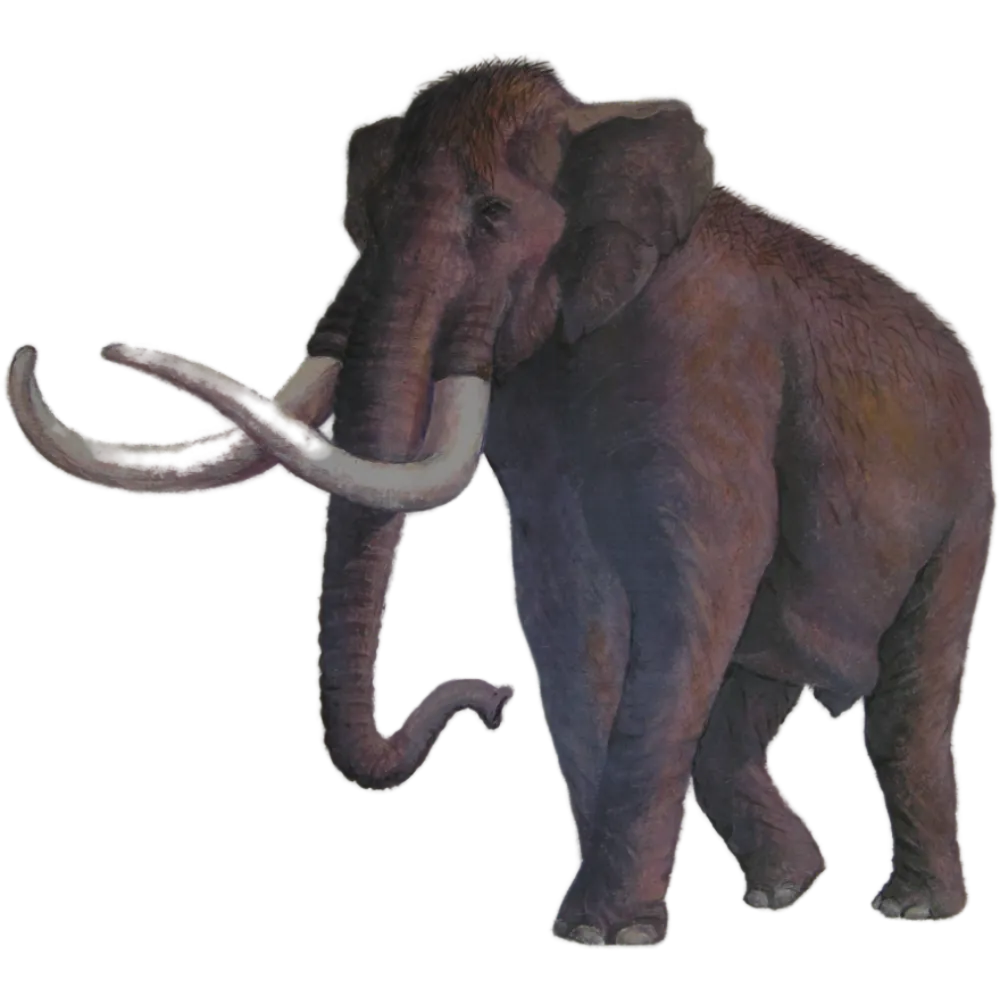
A distant relative of the elephant lived two million years ago in Vatera: the straight-tusked mastodont (Anancus arvernensis). Although this animal looks somewhat like an elephant with huge, straigth tusks, it is not directly related to it. Its cheek teeth do not have the typical ridges as seen in elephant and mammoths, but have cones instead (bunodont). Anancus was a browser, and fed on leaves, fruits and roots, all to be found in the forests. It was a large animal of about three metres high and four metres long. The tusks could grow as long as the body.
Another relative of the elephant lived around Vatera, the southern mammoth (Mammuthus meridionalis). As elephants, mammoths have cheek teeth with parallel enamel ridges, which are ideal for grinding.
Cats
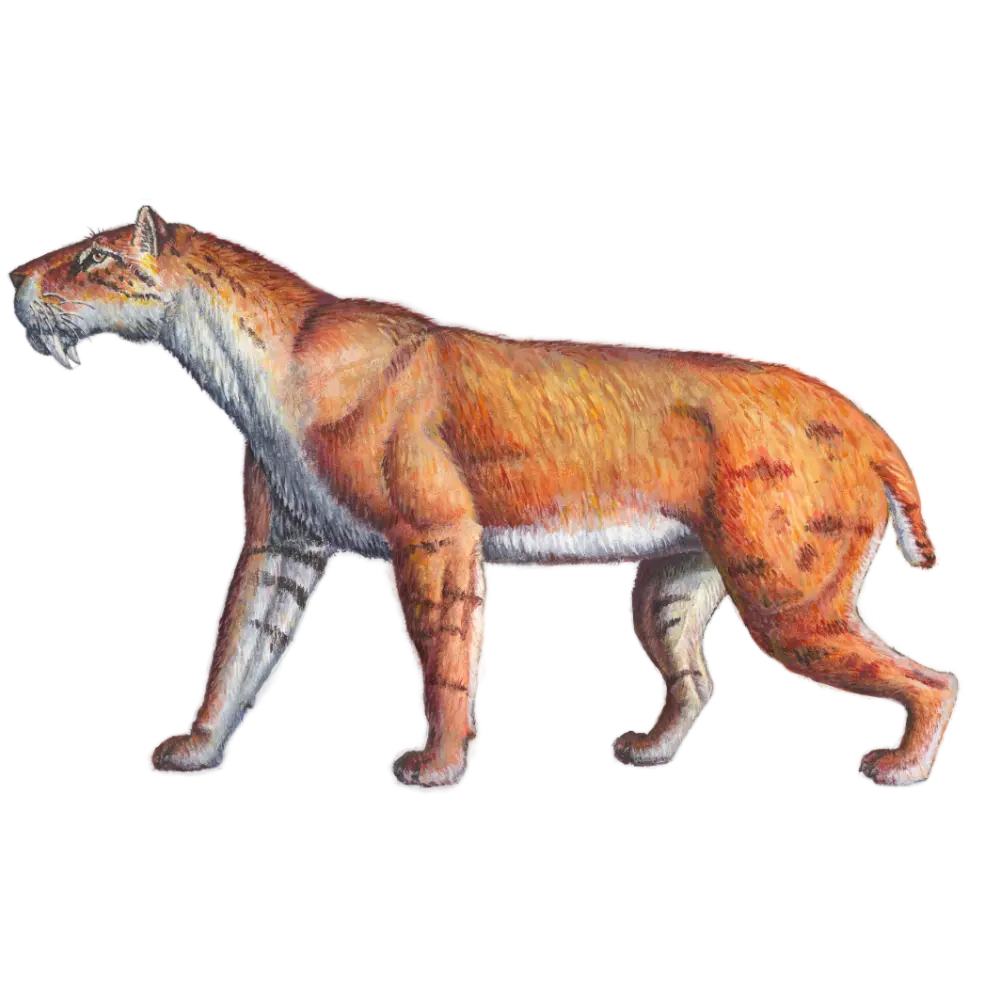
Two or three species of larger cats lived around Vatera, two million years ago. We don’t know yet what cats these were, because only some damaged limb bones were found, nothing more. The largest most probably was a sabre-toothed cat (Homotherium latidens), another maybe the much smaller dirk-toothed cat (Megantereon cultridens), and the third might have been a lynx (Lynx issiodorensis).
Homotherium was as large as a lion. Its teeth have crenulations along the border. Homotherium was comparatively slender with strikingly elongated forelimbs and a short tail. Megantereon on the other hand was much smaller, about the size of a large leopard. Its teeth have smooth borders. Megantereon had especially massive forelimbs and large claws. Although it is relatively small, it is much more massive and more powerful than Homotherium.
Deer

The forest at Vatera, two million years ago, was the home of a fallow-like deer (Metacervoceros rhenana, also known as Cervus philisi). This deer had about the size of the fallow deer of today, but had a different antler, without the characteristic palmation of today’s fallow deer. The antler was simple, with one tine only, and a forked end.
There was another small deer (Croizetoceros ramosus) at Vatera, two million years ago. This Croizetoceros stood about 1 m at the shoulder, and had rather complex antlers – compared to its Miocene ancestors -. These antlers were long and shaped like a lyre, from which three to five subdivided tines arose with a straight angle. Croizetoceros is considered the first representative of the modern deer with multitined antlers. The earlier deer all have at best a two or three-tined antler.
Antelopes and Gazelles

Two million years ago, several gazelles, an antelope and an ox lived at Vatera.
There were at least two gazelles, a smaller and a larger one (Gazella borbonica, Gazella bouvrainae), but possibly there was a third and much larger gazelle, too (Gazella aegaea). Gazelles got extinct in West Europe before the end of the Pliocene, but in Southeast Europe they persisted till the very end of the Pliocene, and were known in several varieties, as can be seen in the case of Vatera. Gazelles are elegant ungulates with a slender body, long neck, long legs and S-shaped, ringed horns. Both males and females have horns. Gazelles of the genus Gazella still live today, but only in Africa, the Middle East and India.
The antelope (Gazellospira torticornis) of Vatera was much larger than the gazelles. It had spiralled horns, which are like an anticlockwise corkscrew. This antelope was common from Europe to China, and has been found in several Greek localities, other than Vatera. The Gazellospira from Vatera is a bit smaller than most other Gazellospira. The genus Gazellospira got extinct in the Pleistocene, contrary to Gazella. The spiral-horned antelopes of today (Tragelaphini) are not directly related to Gazellospira.
Some rare fragments indicate that there was an ox as well, possibly Leptobos.
Giraffes
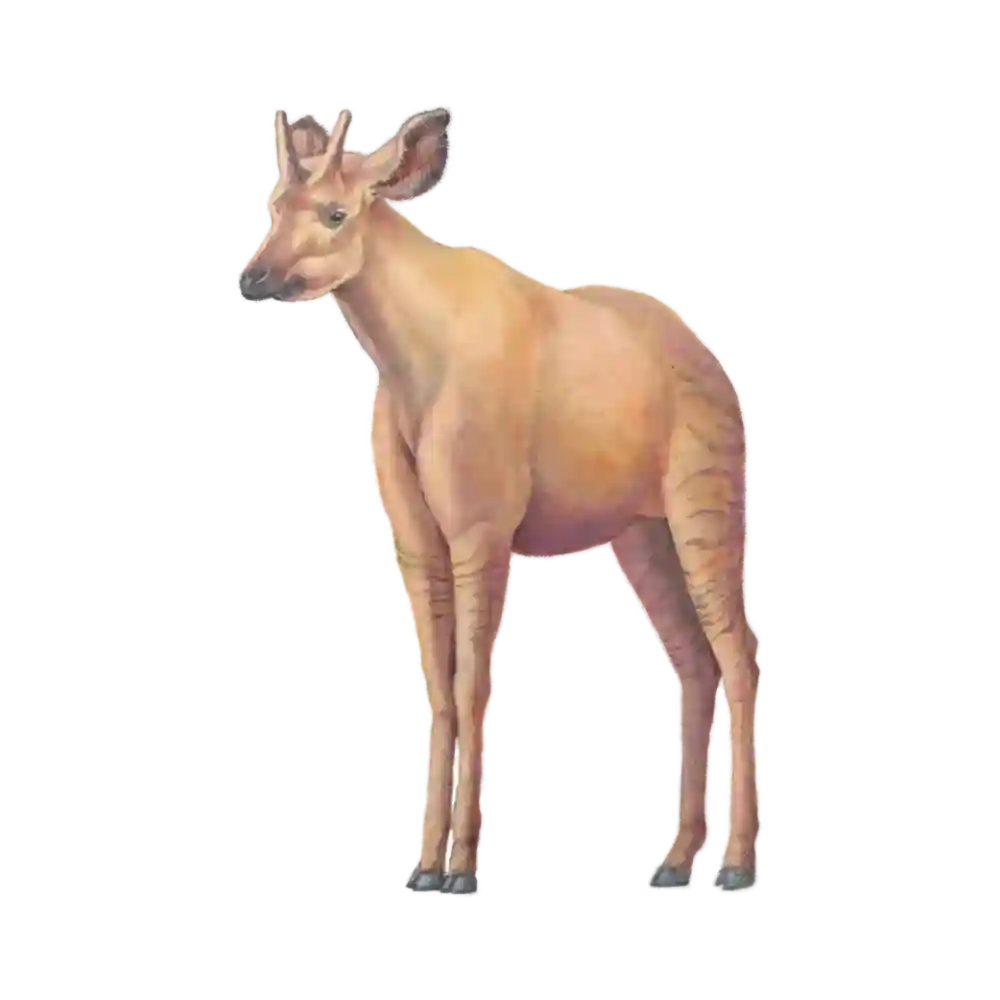
On the plains of Vatera, a kind of giraffe was browsing the trees, two million years ago. This giraffe (Mitilanotherium inexpectatum) was relatively small, compared to the giraffe of today. The legs were elongated, and so was its neck, but not as much as the giraffs of today.
Giraffes are gracile even-toed ungulates with long limbs, a long neck and a spotted skin. The early giraffes, however, had much shorter limbs, and a ‘normal’-sized neck; about the skin we know nothing. The skin may even have been striped on the limbs, as in the okapi, the only living close relative of the giraffe. Typical for giraffes of the present as well as of the past are the bony horn-like bumps on its head. These ‘horns’ (ossicones) are unlike the hollow horns of bovids and unlike the bony outgrowth (pedicle) of the skull of deer. They are formed in the skin and attach later to the skull.
Horses
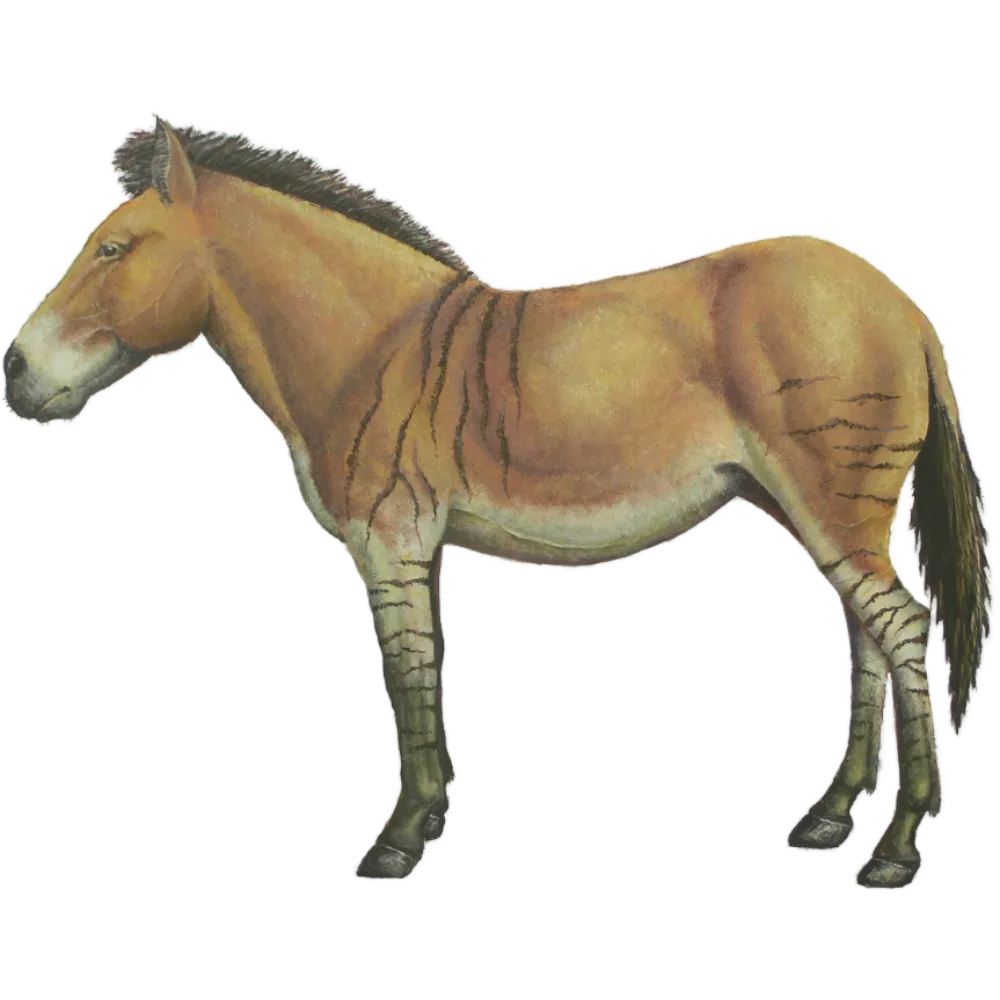
The open terrains around Vatera two million years ago were inhabited by a wild horse (Equus cf. stenonis). This horse was not as large as the domestic horse, and had slender limb bones and a long muzzle with a hollow profile. Most likely, it had stiff upright manes as seen in wild horses and zebras today, striped legs and some striping on the back. It stood some 155 cm at the withers, comparable to a Thoroughbred of today.
Monkeys
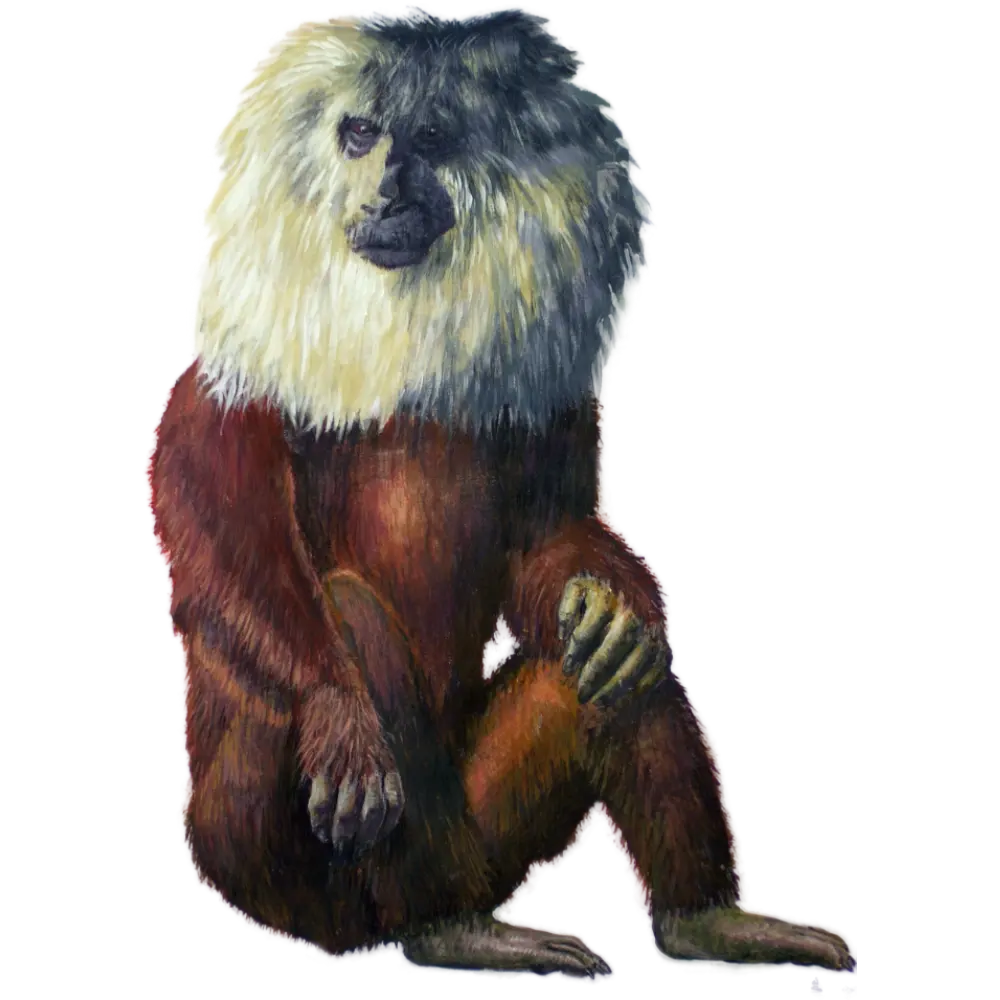
Two million years ago, there lived a kind of giant macaque (Paradolichopithecus arvernensis) around Vatera. This monkey was as big as the largest baboons (Papio ursinus) of today. What makes this macaque so special? Not its size, even if it is impressive for a macaque, but its way of life. Paradolichopithecus lived half on the plains, half in the forest. Its home was at the forest edge bordering the savannah. Paradolichopithecus could climb trees but most of the time it walked on two legs (bipedalism).
Racoon Dog

The raccoon dog of Vatera (Nyctereutes megamastoides) was much larger than the raccoon dog of today (Nyctereutes procyonoides). Two million years ago, raccoon dogs lived all over Europe and Asia. They disappeared from Europe when the wolf (Canis lupus) came to Europe, some time at the end of the Pliocene. That means that sites with fossils of wolf are younger in age than those with raccoon dog remains. Vatera is such an older site. At present, raccoon dogs are typical for East Asia. They have recently been introduced into Europe, where they were released in the wild to establish a new fur animal in the wild. However, it established itself too easily and became really successful.
Tortoises
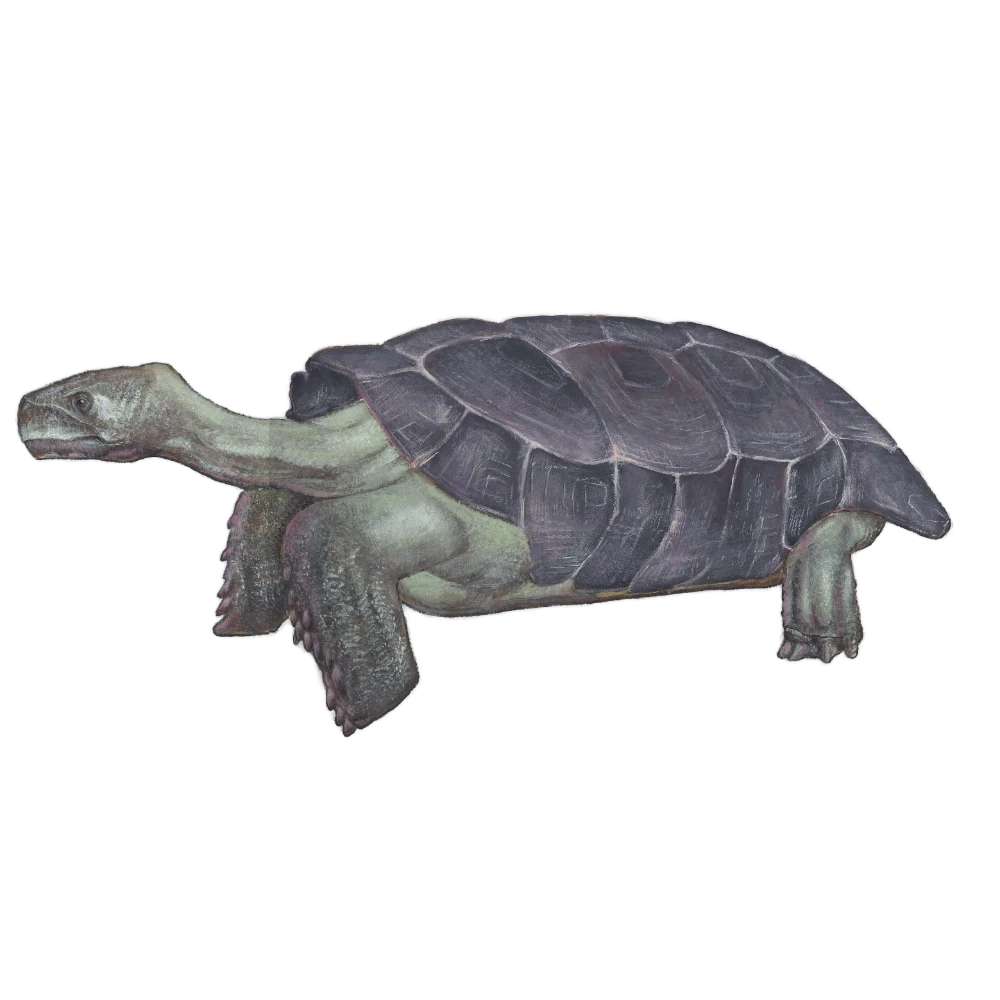
Hardly any reptile fossil has been discovered at Vatera, but the ones that were found are spectaculair. They belong to a giant tortoise (cf. Cheirogaster aff. schafferi), which was as big as a Volkswagen beetle: the shell was almost two metres long! In the backyard of the museum you can find a life-size reconstruction. The Vatera tortoise is one of the largest tortoises of the world.
But also remains of a small tortoise (Testudo graeca ibera) were found. Its almost complete shell is on exhibit inside the museum. This tortoise lived also in other parts of Greece (Macedonia, Peloponese, Dodecanese, Crete) two million years ago, and at present still lives on Lesvos.
Rhino
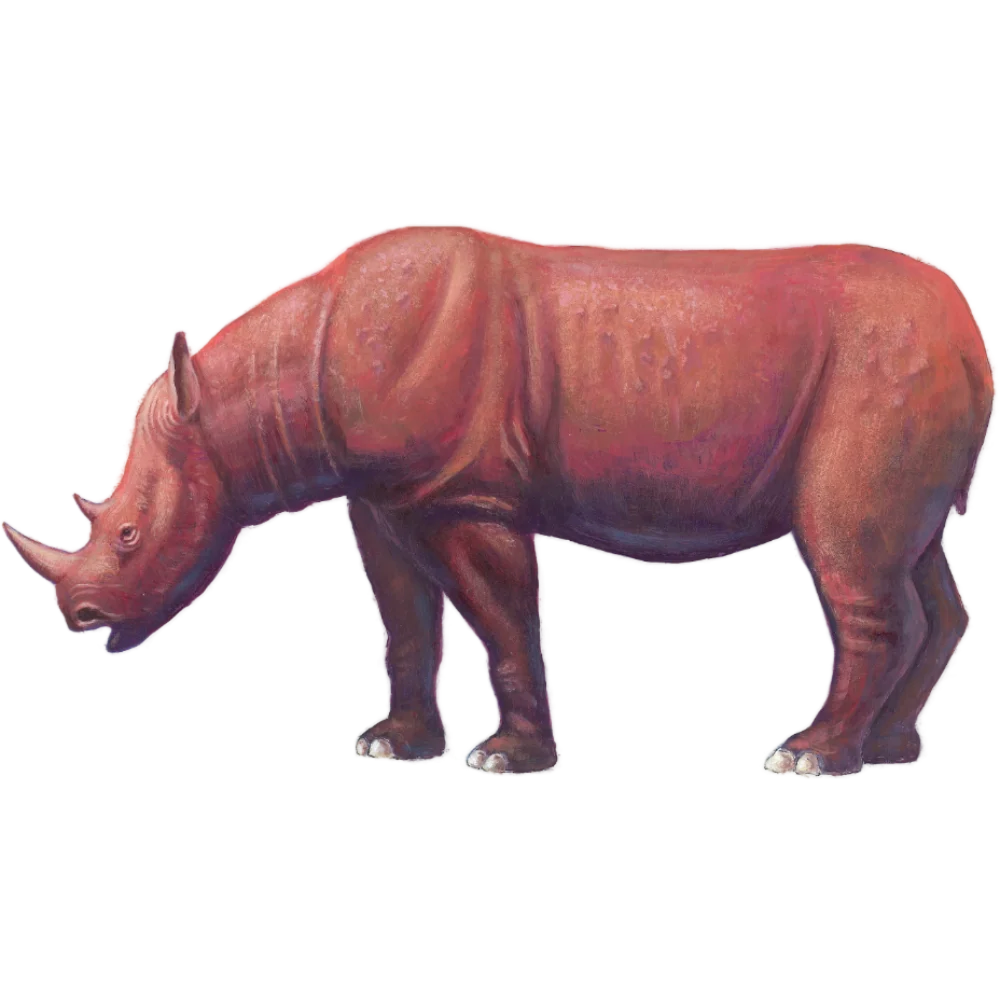
The Etruscan rhinoceros (Stephanorhinus etruscus) was an inhabitant of the forests around Vatera two million years ago. This rhinoceros was small and had relatively long limbs. It bore two horns: one larger horn on its nose and one much smaller horn on its forehead. The Etruscan rhinoceros was a browser, and thus has low-crowned molars (brachyodont) without complex enamel pattern.
Rhinoceroses are odd-toed ungulates (Perissodactyla), and remote relatives of the horses (Equidae). Today, there are two-horned rhinos (Africa and Asia) and one-horned rhinos (Asia), but they are all endangered because of hunting and deforestation. The living two-horned rhinos are the white rhino (Ceratotherium) and the black rhino (Diceros) of Africa, and the hairy rhino (Dicerorhinus) of Sumatra. The African white and black rhinos are closely related, yet the first one is a grazer, and the second one a browser. The Sumatran hairy rhino is closely related to the wooly rhino (Coelodonta antiquitata) of the Pleistocene and the Etruscan rhino (Stephanorhinus etruscus) of the Pliocene.
The living one-horned rhinos are the great Indian one-horned rhino (Rhinoceros unicornis), after which the whole family was named, and the smaller Asian one-horned rhino, or Javan rhino (Rhinoceros sondaicus). They are not closely related to the lineage of the Etruscan rhino.

